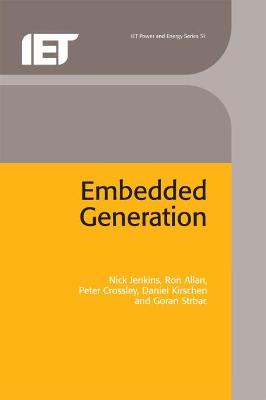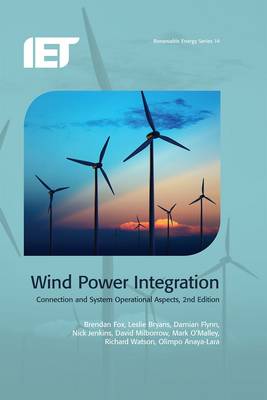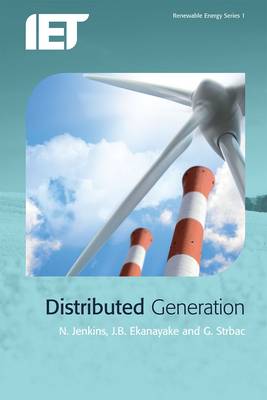Energy Engineering
3 total works
Embedded Generation
by Nick Jenkins, Ron Allan, Peter Crossley, Daniel S. Kirschen, and Goran Strbac
The use of combined heat and power (CHP) plants and renewable energy sources reduces the amount of greenhouse gases released into the atmosphere and helps to alleviate the consequent climate change. The policies of many governments suggest that the proportion of electrical energy produced by these sources will increase dramatically over the next two decades. Unlike traditional generating units, these new types of power plant are usually 'embedded' in the distribution system or 'dispersed' around the network. As a result, conventional design and operating practices are no longer applicable; for example, power protection principles have to be revised and complex economic questions need to be resolved.
This book, intended for both students and practising engineers, addresses all the issues pertinent to the implementation of embedded generation. Much of the material was originally developed for the UMIST MSc/CPD course in Electrical Power Engineering so there is a strong tutorial element. However, since this subject is evolving very rapidly, the authors also discuss the technical and commercial consequences of the very high penetration of embedded generation that are to be expected in the years ahead.
Wind Power Integration
by Brendan Fox, Leslie Bryans, Damian Flynn, Nick Jenkins, David Milborrow, Mark O'Malley, and Olimpo Anaya-Lara
The rapid growth of wind generation has many implications for power system planning, operation and control. Network development, voltage rise, protection, monitoring and control are connection problems common to all wind power generation.
Wind Power Integration: Connection and System Operational Aspects, 2nd edition has been fully revised and updated to take account of the significant growth in wind power deployment in the past few years to provide a wide-ranging discussion on all major aspects of wind power integration into electricity supply systems. Topics covered include:
- the development of wind power technology and its world-wide deployment
- a primer in electric power engineering for non-electrical engineers - which system delivers significant wind energy to consumers at least cost?
- wind power technology and the interaction of various wind turbine generator types with the utility network
- utility networks, and how they may be developed to accept significant wind power
- how operational practice can be modified to take account of a variable power source with limited scope for control
- wind power forecasting
- the challenges faced by wind energy in modern electricity markets
This second edition has been fully revised and updated to take account of the significant growth in wind power deployment in the past few years. New discussions have been added to describe developments in wind turbine generator technology and control, the network integration of wind power, innovative ways to integrate wind power when its generation potential exceeds 50% of demand, case studies on how forecasting errors have affected system operation, and an update on how the wind energy sector has fared in the marketplace.
Wind Power Integration: Connection and System Operational Aspects, 2nd edition will appeal to engineers from various disciplines looking for an overview of a technology that is providing a major impetus for sustainable electricity supply in the twenty-first century.
Distributed Generation
by Nick Jenkins, Janaka Ekanayake, and Goran Strbac
Throughout the world there is concern over the impact of energy use on the environment (particularly CO2 emissions) and also over the security of fossil fuel supplies. Consequently, governments and energy planners are actively encouraging alternative and cleaner forms of energy production such as renewables (e.g. wind, solar, biomass) and combined heat and power (CHP).
The economics and locations of sustainable energy sources have meant that many of these new generators are connected into distribution networks. It is recognized that the information flow and control of distribution networks is inadequate for these future low-carbon electricity supply systems. The future distribution network will change its operation from passive to active, and the distributed generators will be controlled to support the operation of the power system. In many countries this transformation of electricity supply is managed through energy markets and privately owned, regulated transmission and distribution systems.
This book discusses the connection of generation to distribution networks and then moves on to consider how sustainable generation can be fully integrated into the operation of the power system. Both technical and economic aspects are addressed. It is written for later-year undergraduate and postgraduate students studying courses on energy. The book has four tutorial chapters (with examples and questions) to provide fundamental material for those without a strong electrical engineering background.


